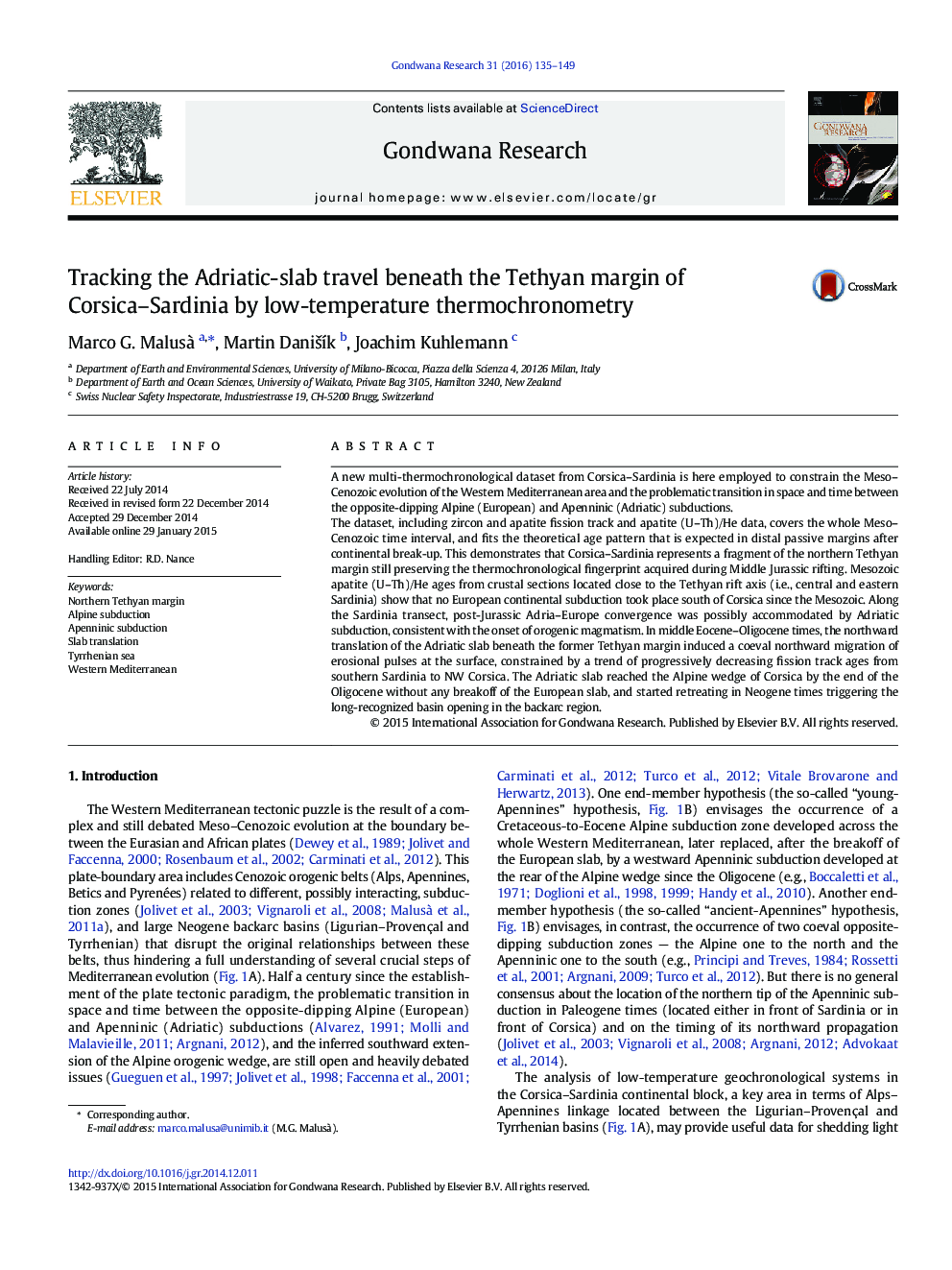| کد مقاله | کد نشریه | سال انتشار | مقاله انگلیسی | نسخه تمام متن |
|---|---|---|---|---|
| 4726676 | 1640140 | 2016 | 15 صفحه PDF | دانلود رایگان |

• First full spatial coverage of Sardinia by three low-T thermochronometers
• A reconstruction of the northern Tethyan margin by low-T thermochronometry
• Thermochronological evidence of Adria slab translation beneath Sardinia and Corsica
A new multi-thermochronological dataset from Corsica–Sardinia is here employed to constrain the Meso–Cenozoic evolution of the Western Mediterranean area and the problematic transition in space and time between the opposite-dipping Alpine (European) and Apenninic (Adriatic) subductions.The dataset, including zircon and apatite fission track and apatite (U–Th)/He data, covers the whole Meso–Cenozoic time interval, and fits the theoretical age pattern that is expected in distal passive margins after continental break-up. This demonstrates that Corsica–Sardinia represents a fragment of the northern Tethyan margin still preserving the thermochronological fingerprint acquired during Middle Jurassic rifting. Mesozoic apatite (U–Th)/He ages from crustal sections located close to the Tethyan rift axis (i.e., central and eastern Sardinia) show that no European continental subduction took place south of Corsica since the Mesozoic. Along the Sardinia transect, post-Jurassic Adria–Europe convergence was possibly accommodated by Adriatic subduction, consistent with the onset of orogenic magmatism. In middle Eocene–Oligocene times, the northward translation of the Adriatic slab beneath the former Tethyan margin induced a coeval northward migration of erosional pulses at the surface, constrained by a trend of progressively decreasing fission track ages from southern Sardinia to NW Corsica. The Adriatic slab reached the Alpine wedge of Corsica by the end of the Oligocene without any breakoff of the European slab, and started retreating in Neogene times triggering the long-recognized basin opening in the backarc region.
Figure optionsDownload as PowerPoint slide
Journal: Gondwana Research - Volume 31, March 2016, Pages 135–149